President of Notre Dame Cathedral's fundraising effort reveals reopening plans
Michel Picaud, president of Friends of Notre-Dame de Paris, shares updates on the restoration of the Notre Dame Cathedral in France five years after a fire shut the site down.
When Western tourists who are visiting Istanbul, Turkey, cruise into a port, many typically look for one particular landmark: the Hagia Sophia.
Identifying the ancient temple, which has served as a church, museum and mosque, may be tricky from a distance. Istanbul’s skyline appears to be peppered with look-alike large mosques with Byzantine-style domes and tall minarets surrounding them.
There is the Süleymaniye Mosque, built in the 16th century to rival the Hagia Sophia, on the orders of Sultan Süleyman, according to Britannica.
EXPERTS SHOCKED BY ANCIENT KING ARTHUR MANUSCRIPT FOUND TUCKED INSIDE BOOK: ‘SURVIVED THE CENTURIES’
Then there is the Blue Mosque, an Ottoman-era temple just a short walk from the famous landmark, followed by many other similar structures.
The Hagia Sophia Grand Mosque is a Muslim place of worship — but that is not the reason it attracts so much attention.
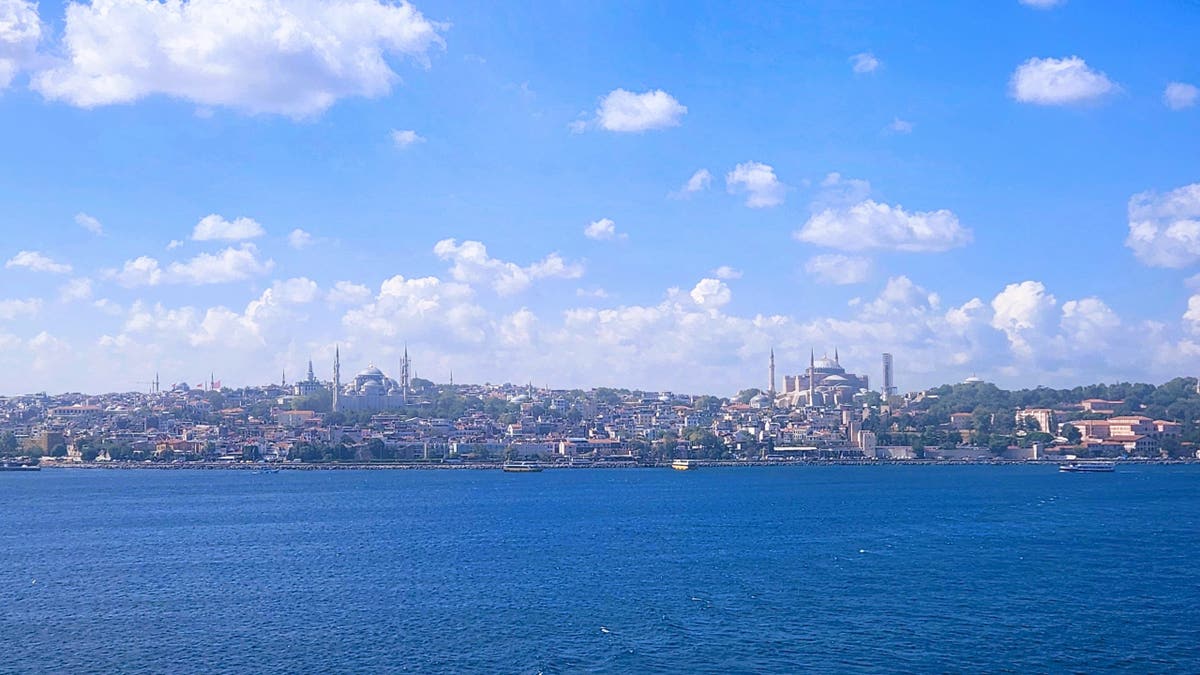
The European side of Istanbul, Turkey, is seen above.
For almost 1,000 years, it was a Christian basilica, the largest and most spectacular temple not just in Constantinople, but in the entire Byzantine Empire.
"Hagia Sophia is simply unique, without parallel," Robert Nelson, Robert Lehman Professor of the History of Art, emeritus, Yale University, told Fox News Digital.
"The height of its dome was not surpassed until the building of St. Peters Basilica in the 16th century. Even more impressive than just its size is its beautiful, lavish marble decoration inside."
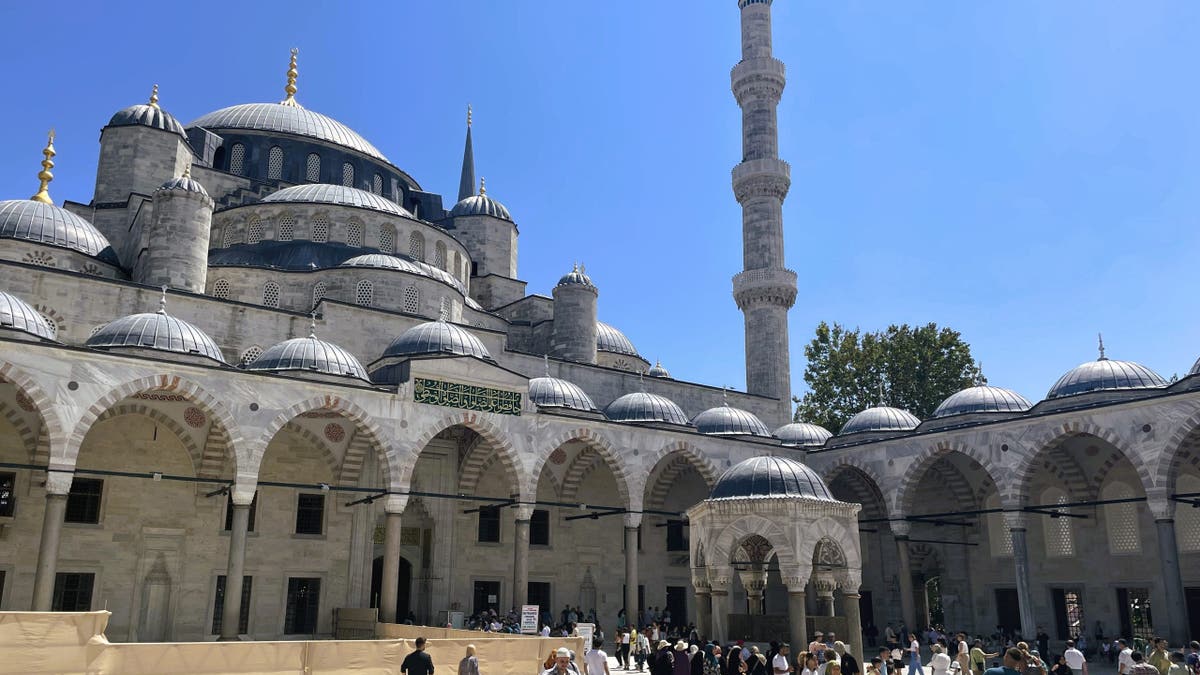
The Blue Mosque, properly known as the Sultan Ahmed Mosque, was built between 1609-1616, according to Britannica. (Danuta Hamlin/Fox News)
"Massive marble columns were brought from around the ancient world. The walls are sheathed in handsome marbles that have dulled over time but still impress," he said.
It was commissioned by Eastern Roman Emperor Justinian I and designed by two Greek architects and mathematicians, Isidore of Miletus and Anthemius of Tralles.
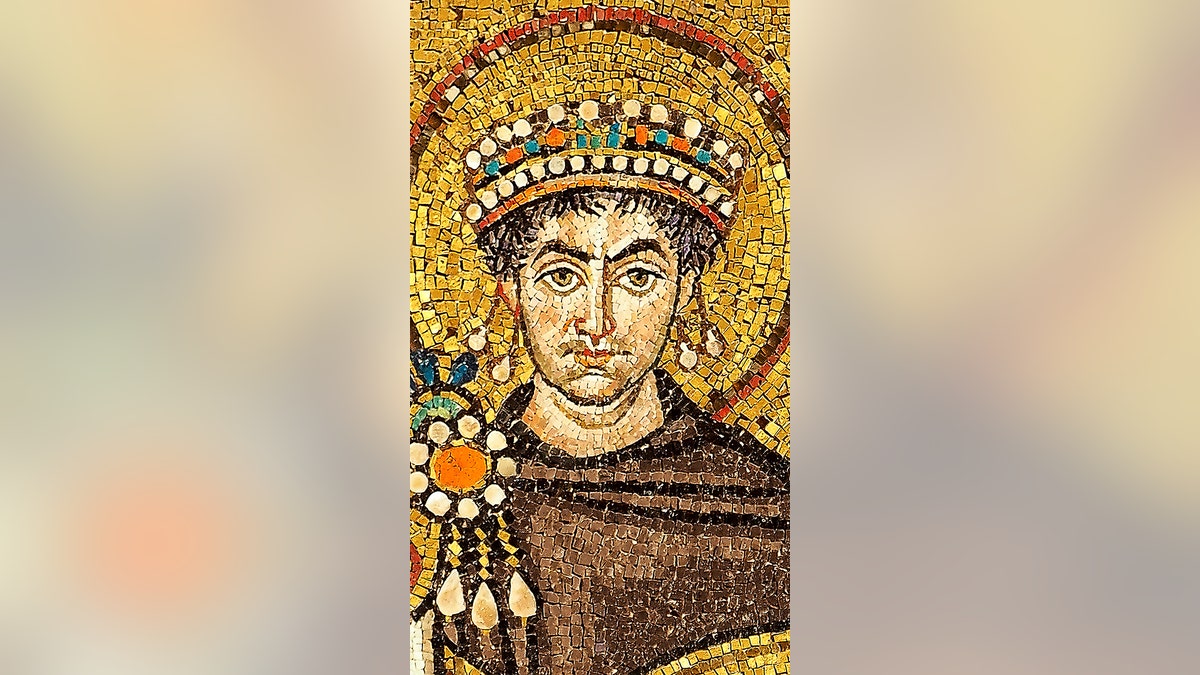
The Hagia Sophia, a major historical monument, was commissioned by Emperor Justinian the Great. (History/Universal Images Group via Getty Images)
No wonder this architectural marvel is frequently called the eighth wonder of the world.
"Justinian dreamed of an entirely new kind of church," wrote Italian Renaissance scholar Frederick Hartt. And Justinian got exactly what he wanted.
ANCIENT STRUCTURE USED FOR CULT 'RITUALS' DISCOVERED BY ARCHAEOLOGISTS
"Solomon, I have vanquished thee!" the imaginative emperor reportedly boasted upon the completion of his magnificent basilica.
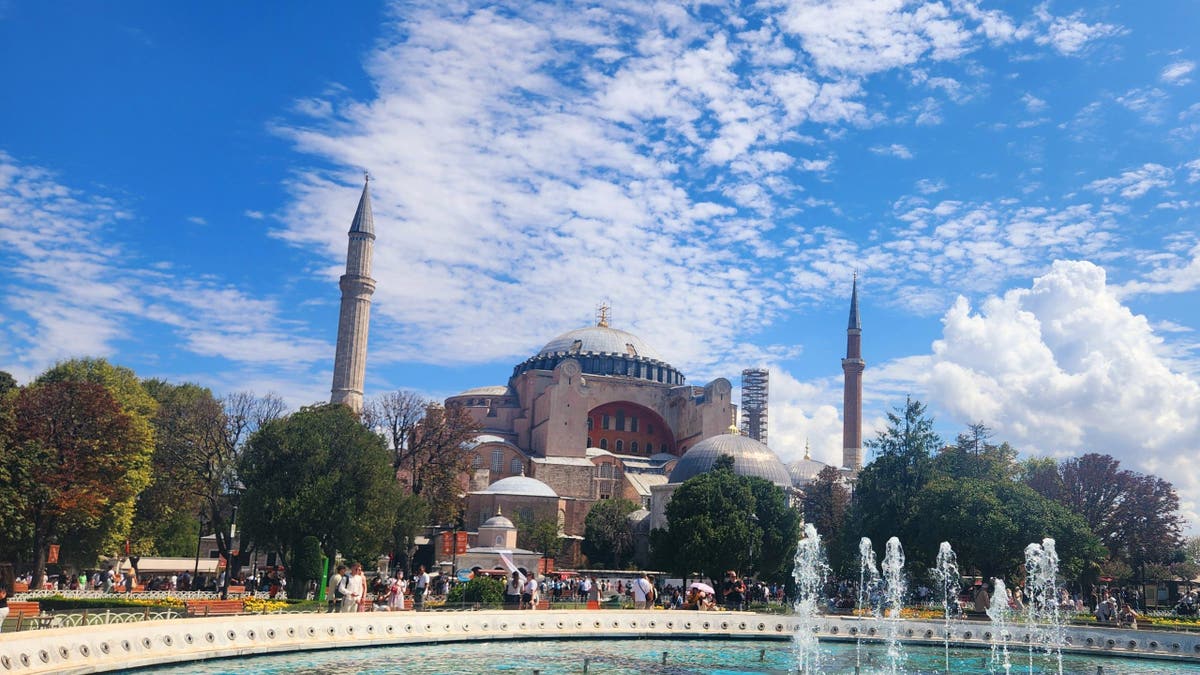
The Hagia Sophia was built in the 6th century AD in Constantinople, the Byzantine Empire. (Danuta Hamlin/Fox News)
The bottom line is that the Hagia Sophia is ancient, built between 532 and 537 AD — and tourists can still set foot inside it and soak in all its glory.
"The glorious impression of harmoniously blended space and light we receive in the interior today should be supplemented in imagination by visualizing the majestic procession of the Byzantine emperor and his court," wrote Hartt.
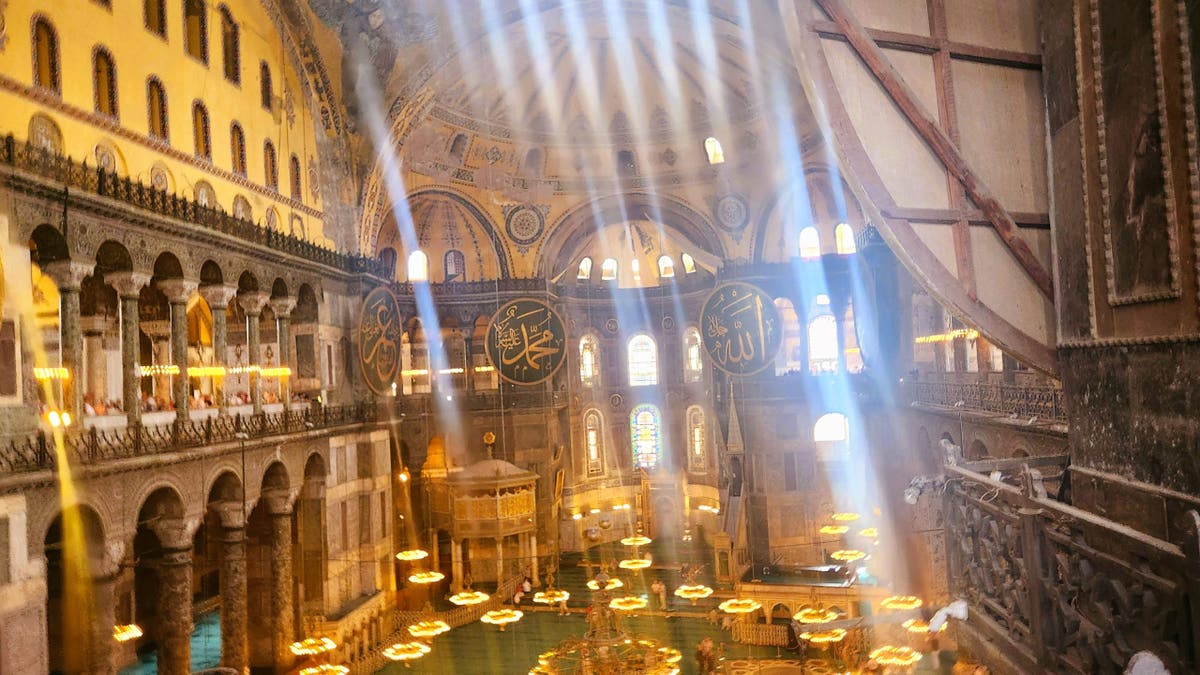
Morning light penetrates the interior of the Hagia Sophia in Istanbul, Turkey. (Danuta Hamlin/Fox News)
The Hagia Sophia is grand and awe-inspiring — and makes visitors wonder how people so many centuries ago managed to engineer such a complex structure.
Then again, this is about the Greeks.
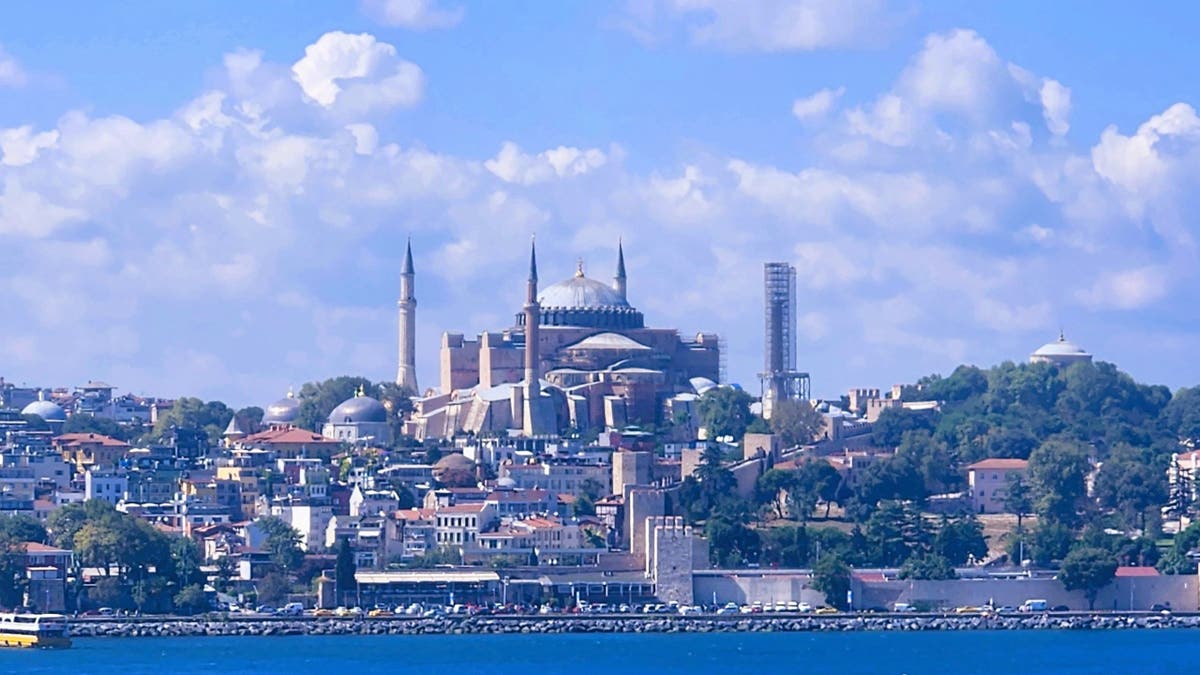
After a 6th century earthquake, the Hagia Sophia in Instanbul dome suffered damage and was redesigned by Isidorus the Younger. (Danuta Hamlin/Fox News)
When the basilica was erected, Constantinople, perched at the eastern end of the European continent and named after emperor Constantine the Great, was one of the most important capitals of Christendom.
ANCIENT TEN COMMANDMENTS FRAGMENT OF 2,000-YEAR-OLD MANUSCRIPT GOES ON DISPLAY AT REAGAN LIBRARY
Formerly known as Byzantium, this ancient city was built to rival Rome. It was known for its state-of-the-art fortifications.

A 13th-century representation of the Virgin Mary, Christ and John the Baptist at the Hagia Sophia, Istanbul, Turkey. (Danuta Hamlin/Fox News)
After the Great Schism of 1054, which broke Christianity into Roman Catholic and Eastern Orthodox communions, things got a bit complicated.
Constantinople remained the center of the Greek Orthodox church, but its power was weakened.
In April 1182, an event took place known in history as the Massacre of the Latins. As Donald M. Nicol described it in his book "Byzantium and Venice," "The people needed no encouragement. With an enthusiasm fired by years of resentment, they set about the massacre of all the foreigners that they could find… At the end, some 4,000 westerners who had survived the massacre were rounded up and sold as slaves to the Turks. Those who had escaped by ship took their revenge by burning and looting the Byzantine monasteries on the coasts and islands of the Aegean Sea."
ANCIENT JEWISH RITUAL BATH, OLDEST OF ITS KIND IN EUROPE, UNCOVERED BY ARCHAEOLOGISTS
In 1204, Constantinople was sacked by the crusaders in retaliation for the massacre and held by the West for several decades, according to numerous sources.
In 1453, trouble came from the Asian side. The city was sacked again — this time by the Turks — and incorporated into the Ottoman Empire.
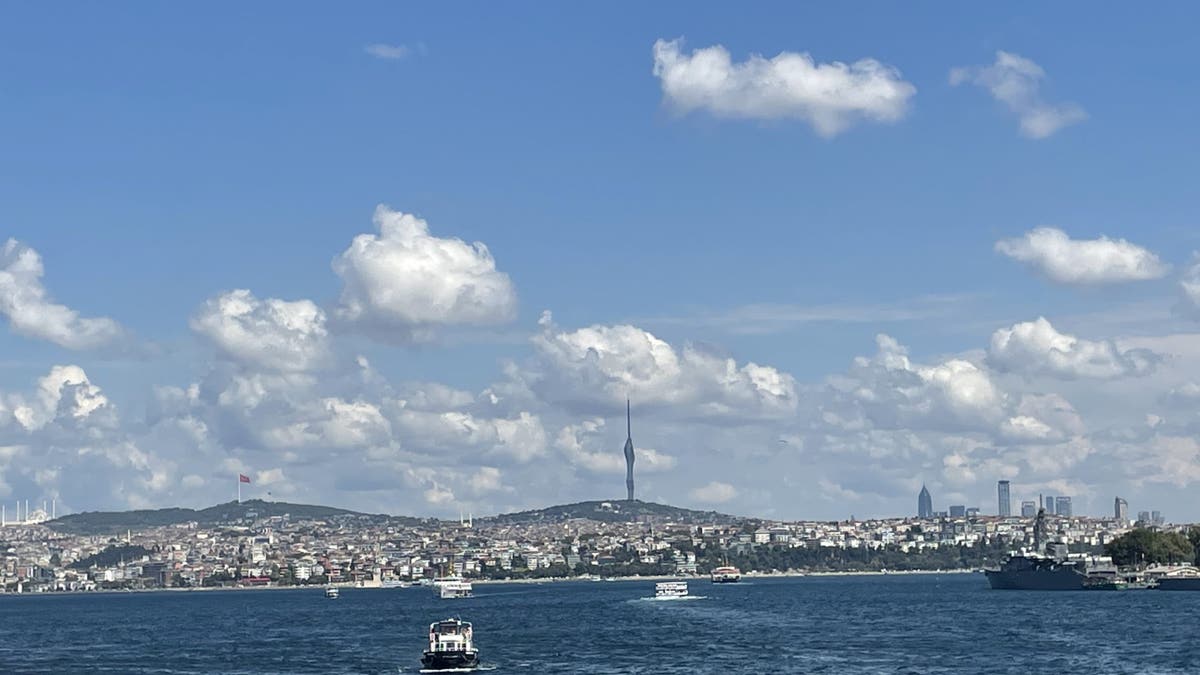
The Istanbul skyline is pictured in 2024. (Danuta Hamlin/Fox News)
As a result, the Basilica of Hagia Sophia was turned into a mosque and minarets were added.
"Hagia Sophia had an immediate effect on the Ottomans after they conquered the city and Sultan Mehmed II, the conqueror, declared that it should not be harmed. It was to be his mosque and remained the principal mosque of the city for some time," Nelson told Fox News Digital.
"Ottoman architects, beginning in the later 15th century, strove to copy its dome and interior."
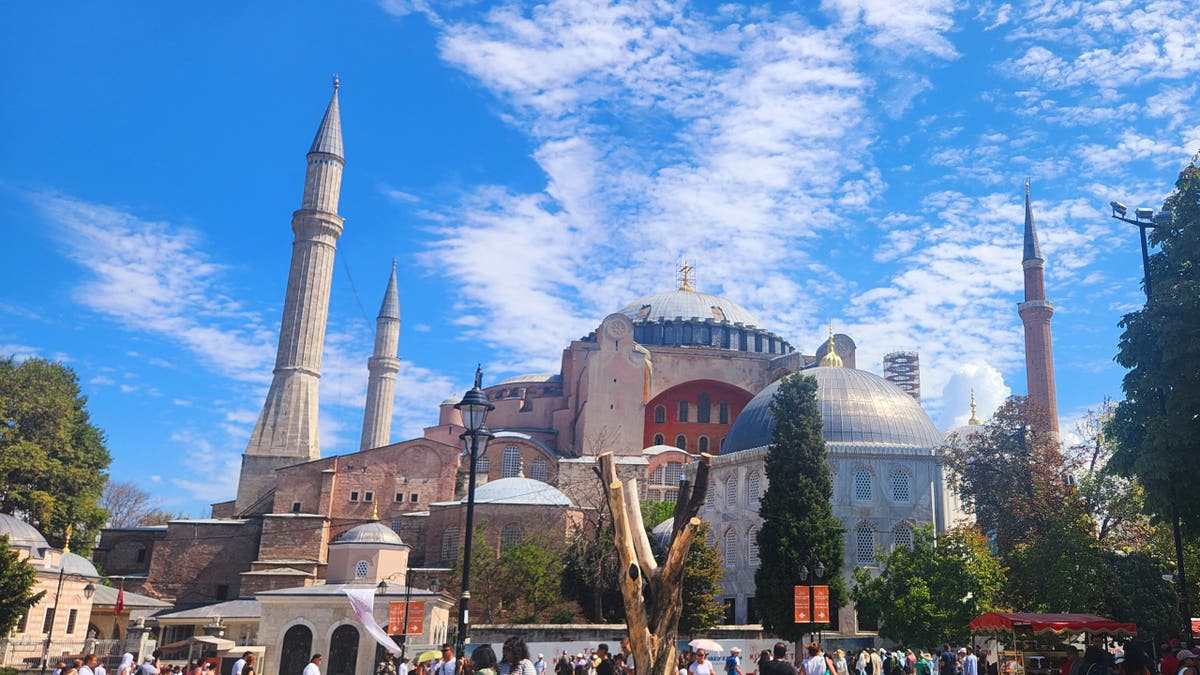
Four minarets were added when the Hagia Sophia became a mosque. (Danuta Hamlin)
Historians say the Ottoman Empire grew in power, spreading into Africa and eastern parts of Europe, menacing towns, raiding villages, taking inhabitants into slavery.
At the time when the Western European powers were engaging in exploration and expanding their territories into the New World, their eastern counterparts were busy defending their own borders.
For more Lifestyle articles, visit foxnews.com/lifestyle
Things had gotten pretty rough, especially for the Habsburg Empire (Austria). The city of Vienna found itself under siege several times.
The turning point came on Sept. 12, 1683. That's when Polish King Jan III Sobieski, the ruler of the Polish-Lithuanian commonwealth, came to the rescue of the besieged Austrian capital.

A gift shop in Istanbul, Turkey, is shown above. (Danuta Hamlin/Fox News)
Confident that this time they would conquer Vienna, the vast Ottoman force, led by Kara Mustafa, was instead crushed by Sobieski and his Polish-heavy cavalry, the famed winged hussars.
Pope Innocent XI hailed Sobieski as the "savior of Vienna and Western European civilization."
King Jan Sobieski wrote to his wife, Queen Maria Kazimiera: "God Our Lord blessed for eternity has granted a victory and glory to our nation, the like of which was never heard of in centuries past," according to the Museum of King Jan III’s Palace at Wilanow and from a letter translated by Klaudyna Michałowicz.
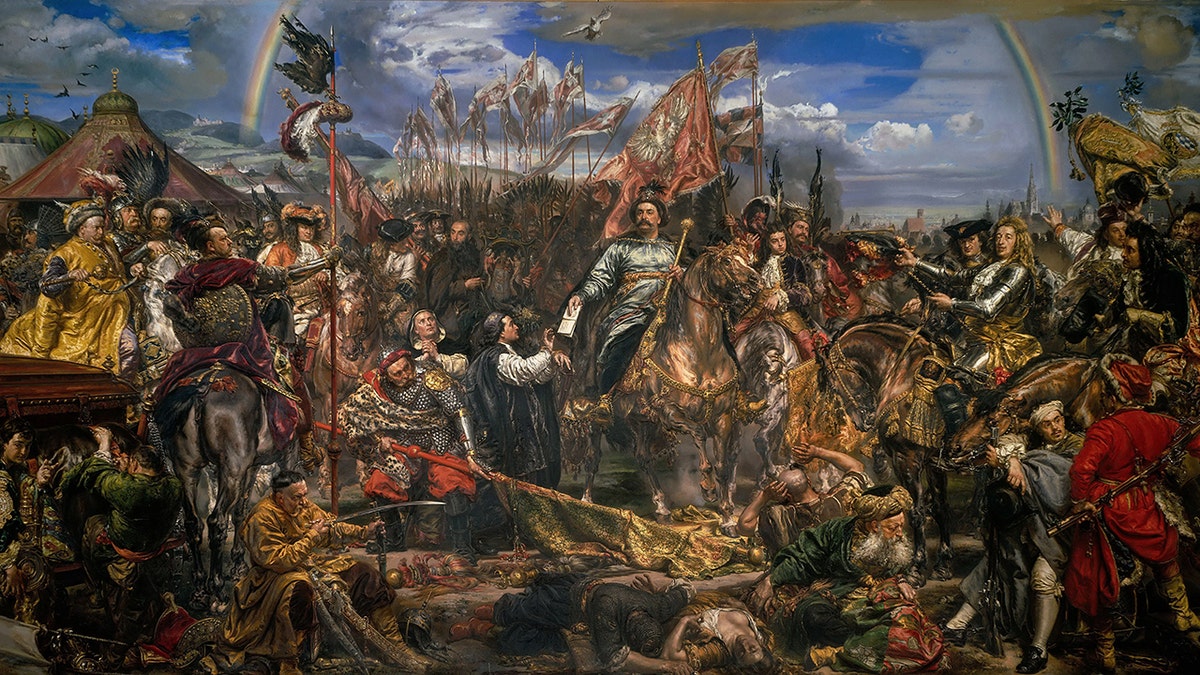
King John III Sobieski is shown sending a message of victory to Pope Innocent Xi after the battle of Vienna, by Jan Matejko. (Fine Art Images/Heritage Images/Getty Images)
The battle of Vienna marked the beginning of the decline of the Ottoman Empire, but the city of Constantinople on the Bosporus Strait, a natural waterway dividing Europe and Asia, remained in Turkish hands.
The 19th century brought a sudden resurgence of international interest in the Hagia Sophia.
CLICK HERE TO SIGN UP FOR OUR LIFESTYLE NEWSLETTER
According to Nelson, the reason was the movement toward Romanticism. "It brought a new attitude toward the past, especially toward ancient and medieval Christianity," he said.
The ancient city of Constantinople sprawls across two continents, and in 1930 it was renamed Istanbul.
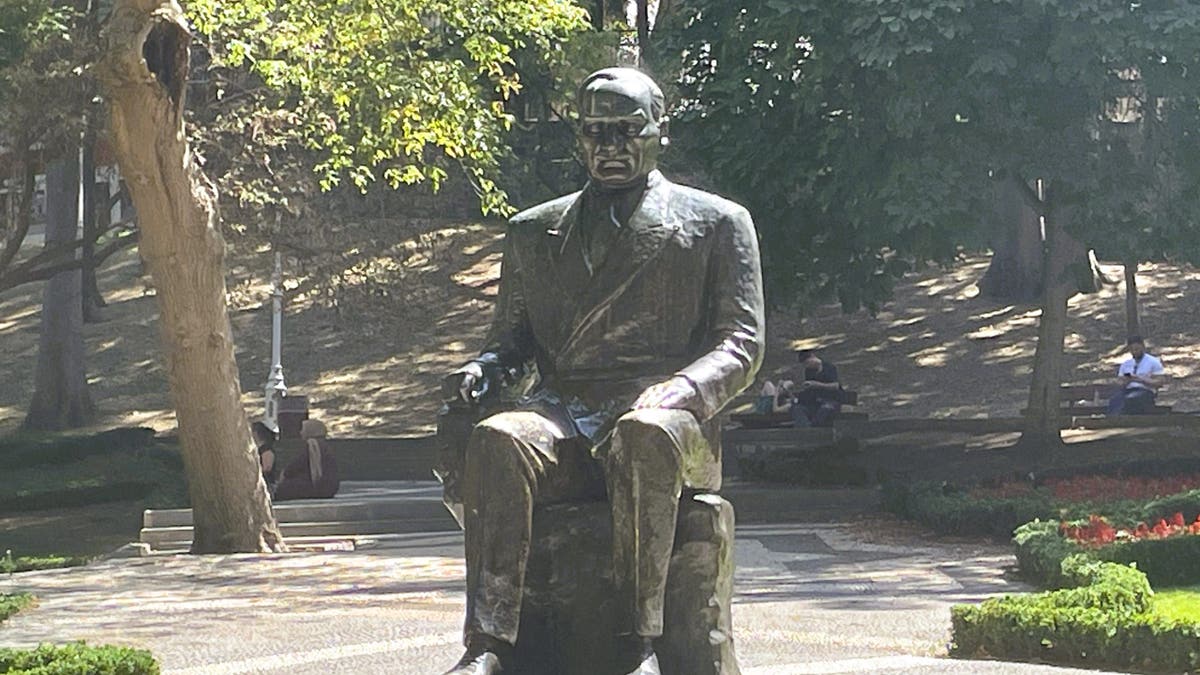
The Mustafa Kemal Atatürk Statue in Gulhane Park, Istanbul, Turkey. (Danuta Hamlin/Fox News)
In 1935, Mustafa Kemal Atatürk, founder of the modern Republic of Turkey, transformed Hagia Sophia into a museum.
Over the years, the former basilica and mosque underwent significant renovations and became a favorite among tourists. But in 2020, despite many objections from UNESCO and international communities, the government of Turkey rescinded Hagia Sophia's museum status and turned it back into a working mosque.

In 2024, the Turkish ministry of culture and tourism completed a digital scan of Hagia Sophia, creating a "digital twin" of the temple to make sure they could rebuild it if ever needed. (Danuta Hamlin/Fox News)
Tourists are now allowed to enter only the upper level (the gallery) of this historic building and view its interior from above. It does not slow them down, however.
There are long lines to purchase tickets for those who have not secured tickets online. Also, female visitors must cover their heads upon entering.
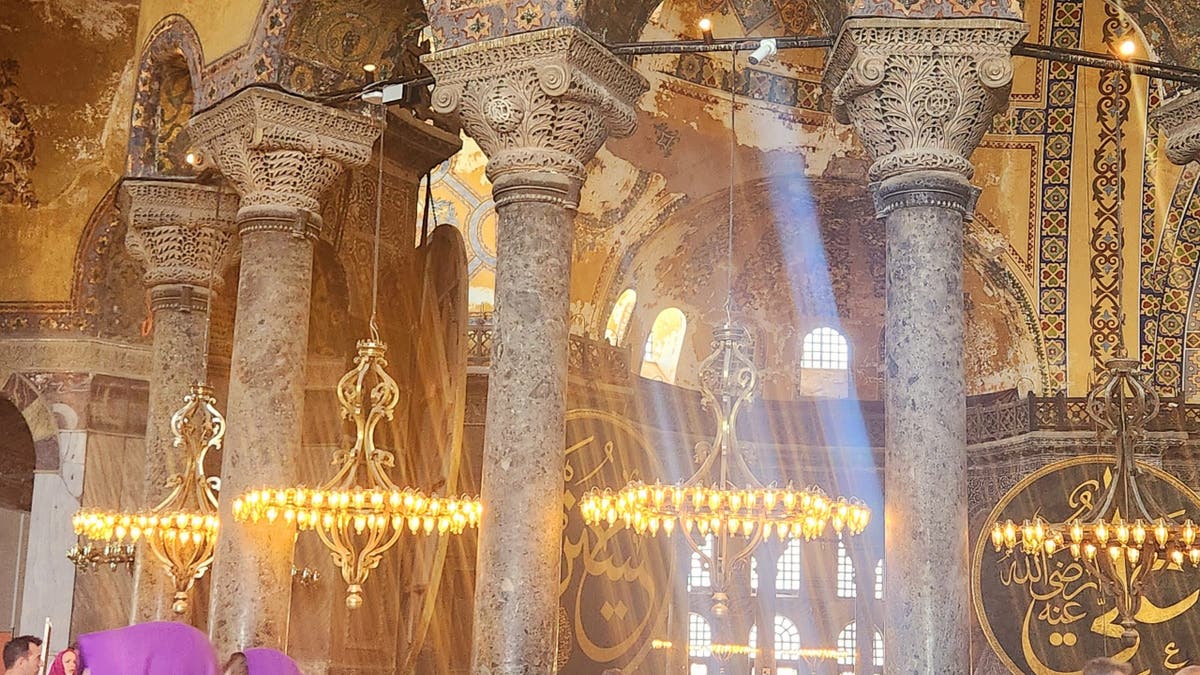
Head coverings are mandatory for women entering the Hagia Sophia. (Danuta Hamlin/Fox News)
Once inside, they find themselves facing the images of Jesus, the Virgin Mary and other saintly figures created by Christian artists so many centuries ago.
There is a separate entrance for Turkish citizens that leads to the ground level of the mosque.

This 11th century panel features Christ seated on the throne between Emperor Constantine IX and his wife, Zoe, at the Hagia Sophia, Istanbul. (Danuta Hamlin/Fox News)
The Hagia Sophia receives an average of around 50,000 visitors daily and approximately 6-7 million annually, according to Istanbul Deputy Akturkoglu.
CLICK HERE TO GET THE FOX NEWS APP
The influx of visitors depends on the season.

The entrance for Turkish citizens in Hagia Sophia, Istanbul. (Danuta Hamlin/Fox News)
These days, Istanbul is a popular tourist destination, known for its colorful Turkish carpets, bustling bazaars and fragrant spice markets.

A spice bazaar is pictured in Istanbul, Turkey. (Danuta Hamlin/Fox News)
But for many visitors, the focal point is still the Hagia Sophia, the temple that was built before the religion of Islam came to exist.
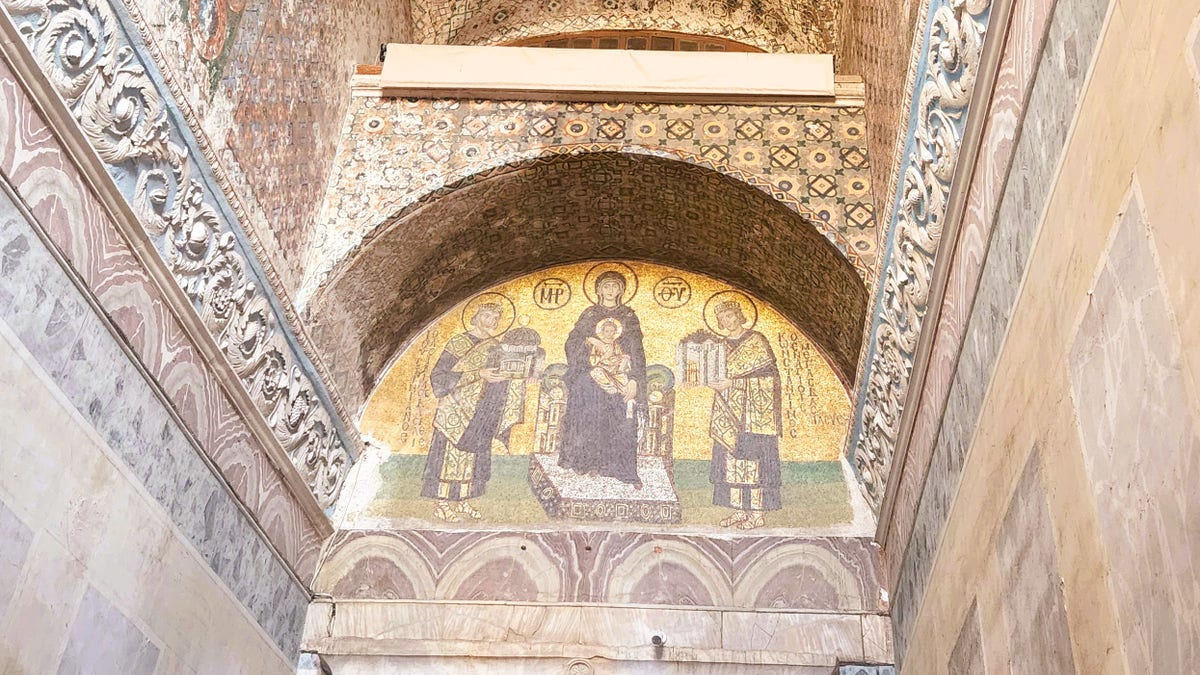
Positioned above the south door in the vestibule of the Hagia Sophia in Instanbul, this mosaic dates to the 10th century. (Danuta Hamlin/Fox News)
Curiously enough, its Byzantine domes are replicated in mosques across Istanbul on both ends of the Bosporus, all looking sort of similar.

Istanbul mosques with Byzantine-style domes. (Danuta Hamlin)
Perhaps the two Greek architects, Isidore and Anthemius would be as amazed as the tourists are.
Their 6th-century Byzantine design lives on and multiplies.






















